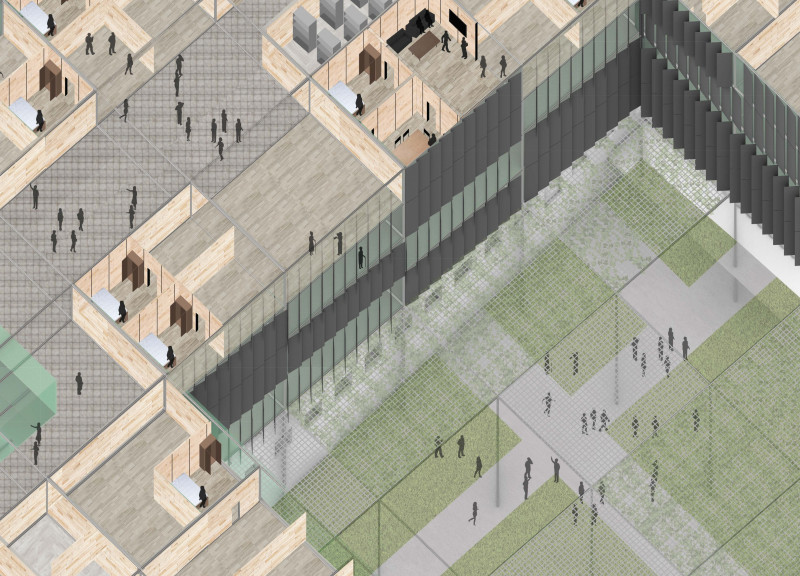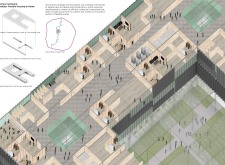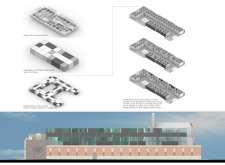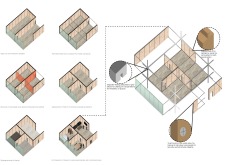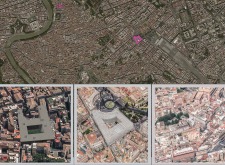5 key facts about this project
Domus Commune is a modular housing project located at the historic San Giacomo Hospital in Via Del Corso, Rome. The design addresses the challenges of urban living with a flexible and adaptable approach. By adding a grid over the existing layout, it creates organized living spaces while respecting the site’s historical context. The architecture balances community interaction with the need for individual customization.
Design Concept
The foundation of Domus Commune lies in its modern interpretation of the Domus Romana, aiming to create a balance between personal and shared living. The layout enables residents to adjust their spaces, accommodating various personal needs while promoting engagement with neighbors. This flexibility is central to the project, allowing for diverse lifestyles within a cohesive community.
Modularity and Flexibility
At the heart of the design are the base units offered to residents, which function as customizable living spaces. Each unit can be divided into smaller areas, responding to the evolving needs of its occupants. The ability to remove and replace internal walls fosters a fluid living experience, enabling each resident to adapt their environment according to current desires or requirements.
Spatial Reconfiguration
A noteworthy feature of Domus Commune is the separate railing system connected to the grid, which facilitates sliding wall partitions. This setup allows easy adjustments to interior configurations, enhancing the project’s overall adaptability. Additionally, twist-lock mechanisms secure the wall panels and maintain structural integrity while allowing residents to personalize their space.
User Agency and Functionality
The design encourages residents to reprogram their spaces, allowing multiple uses over time. This adaptability addresses different needs while supporting a sense of ownership among occupants. The balance of private areas and communal facilities enriches the living experience, fostering connections among residents.
Sliding wall partitions enhance interactions in the shared environment. They create opportunities for socialization while maintaining individual privacy, providing comfortable living conditions in a communal setting.


